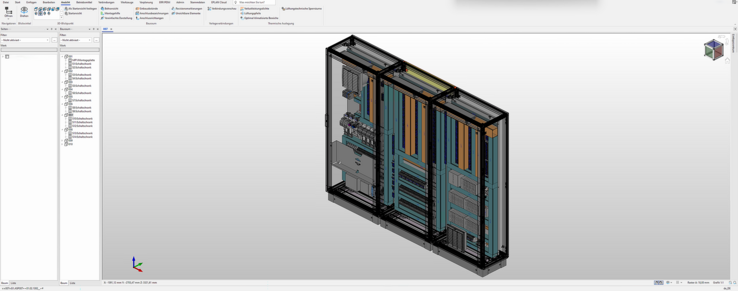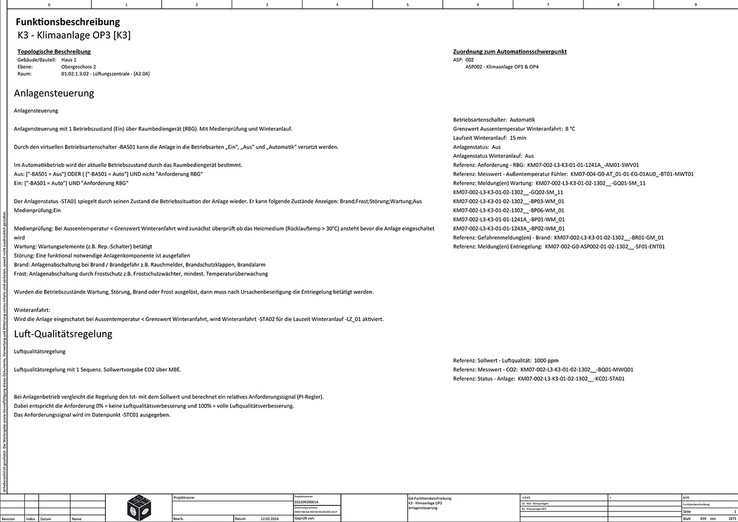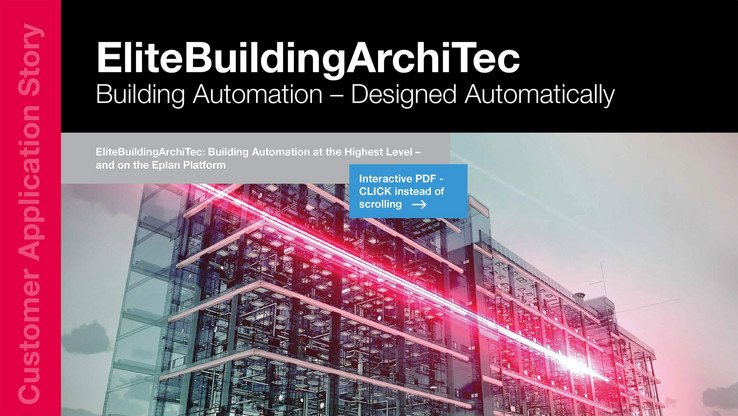Building Automation – Designed Automatically
Building Automation at the highest level – and on the EPLAN Platform
When a comparatively small team manages a very large and demanding building automation project, the processes themselves must also be highly automated. EliteBuildingArchiTec follows exactly this strategy – and consistently relies on the EPLAN Platform.
Why did the decision-makers at EliteBuildingArchiTec choose EPLAN Preplanning? When the decision was first made at SI-Plan Consulting GmbH it was by no means a foregone conclusion. While the EPLAN Platform has long had a very strong market position in industry for electrical engineering, it was only just gaining a foothold in building automation.
CEO Christian Hofer explains: “Six years ago, the people in charge were thinking about the future. SI-Plan Consulting GmbH, which was acquired by EliteBuildingArchiTec, was set on EPLAN right from the very start, despite the fact that not only was EPLAN not widely used for building management systems at the time, it also wasn’t considered ‘ready to use’ for the required tasks. Nonetheless, everything else was right: the structure and the functions. Additionally, EPLAN was and is a large provider, was open to discussions and to our requests, and was also aiming to expand its presence in building automation. That was the beginning of an intense collaboration – which continues to this day.”
What advantages does EPLAN Preplanning offer for designing building automation technology at EliteBuildingArchiTec? Hofer: “We simply have more information available for our planning work than our competitors on the market and can therefore design using a high degree of automation. One of the consequences of this is that our planning reliability is higher, also because we can run virtual testing on very complex functions and systems in advance. And because you only make mistakes once using EPLAN. We don’t use copy and paste, or start on the basis of existing or completed projects. Put simply, we have standardised functions and can use them automatically, at least in part, on the EPLAN Platform.”
As with industrial automation, the planning cannot be fully automatic: “We cannot and also do not want to automate the last mile, meaning the last 10 to 20 per cent of the planning work. That needs to be completed by a professional and it should stay that way, because that is part of our expertise.”
BIM, BACnet, Digital Twins: Planning according to the latest standards
The planners at EliteBuildingArchiTec had to carry out extensive preparations to make this way of working possible. Hofer: “We gave a lot of thought to the structures and working methods before the introduction and rollout. In the first step, EPLAN did not have any industry templates for building automation. We therefore had to invest a lot of effort into setting up and expanding our EPLAN Platform. One of the challenges for EPLAN was to transfer the terminology from industrial applications to the construction sector. We were collaborating very intensively during this period.”
The company has benefitted from this preliminary work over the long term, since the level of detail in its planning is enormous: “Every screw that is stored in the EPLAN project is documented and located in the specifications.” The structure of the planning model is also forward-looking: “In building planning, there is a lot of chatter about the digital twin. We implemented it a long time ago and have also been working according to the BACnet standards for the past three to four years.”

In addition to planning with EPLAN Preplanning, the control cabinet designs will now also be completed using EPLAN.
©Image: EliteBuildingArchiTec
“We are a key trade for reducing carbon dioxide emissions”
With this progressive and, according to Hofer, unique approach in German-speaking countries in Europe, the company plans very complex projects – including large industrial plants or plants for the generation, conversion and storage of renewable energies – with a manageable number of staff. Hofer: “This is a future market, as is the planning of smart cities, where you think far beyond the boundaries of individual buildings and neighbourhoods.”
There is great potential here, even for single buildings: “Building automation is a key trade for reducing carbon dioxide emissions. Significant savings in energy consumption and even emissions are possible – if you work with state-of-the-art planning tools and use them intelligently. This is another reason why our maxim is: We don’t plan for building but plan for operations.”
For the planners and decision-makers at EliteBuildingArchiTec, this is just one of several reasons they’ve been intensely focusing on further optimisation and automation options – including new versions of the digital twin specifically for building automation. One example of this is the “BACnet Twin” specifications drawn up by AMEV (Working Group for Mechanical and Electrical Engineering for State and Municipal Administrations, sponsored by the German Federal Ministry for Housing, Urban Development and Building) that will soon be published. Hofer: “We have already worked intensively on these specifications and are well prepared.”
The Goal: Expand EPLAN as a Platform
EPLAN is pursuing the goal of a digital value chain as the “architects” of EliteBuildingArchiTec’s engineering environment on the EPLAN Platform. The platform should be used as comprehensively and sensibly as possible. EPLAN eVIEW is already integrated into it and offers customers significant added value when planning building automation projects. In 2024, in addition to planning with EPLAN Preplanning, EliteBuildingArchiTec will also be using EPLAN to design control cabinets. Hofer: “This will make it possible to provide the planning data to contractors – for end-to-end project planning on one platform. This is a well-rounded package that saves time, increases transparency and improves planning reliability.”
Use beyond the planning phase in the future
Once the planning phase is complete, work continues with the data from EPLAN. Hofer: “Ideally, the end client continues to work with the digital documentation on an ongoing basis. For instance, if they wish to make changes, they can enter their comments using the redlining and greenlining functions. The comments are seen, can be directly evaluated and then implemented as necessary. This way the documentation always reflects the current actual state of the building – in the sense of the digital twin.”
Outlook: EliteBuildingArchiTec takes over integration planning
Using the EPLAN Platform, EliteBuildingArchiTec is turning to newer and increasingly larger tasks, and not just on the operational level. The company’s structure is also being adapted to the new challenges. Hofer: “In practice, we are moving further and further up the pyramid with our work. As building automation planners and, increasingly, also as integration planners who bring the trades together, we are the ‘technical architects’ of complex construction projects in our region. That’s something we make clear with our company name, EliteBuildingArchiTec, with our own companies in Germany, Austria and Switzerland.” Further cooperation with EPLAN is a given: “We are in regular contact with EPLAN and maintain intensive dialogue with the company. That should and will continue.”
Author: Gerald Scheffels, freelance trade journalist, Wuppertal, Germany






